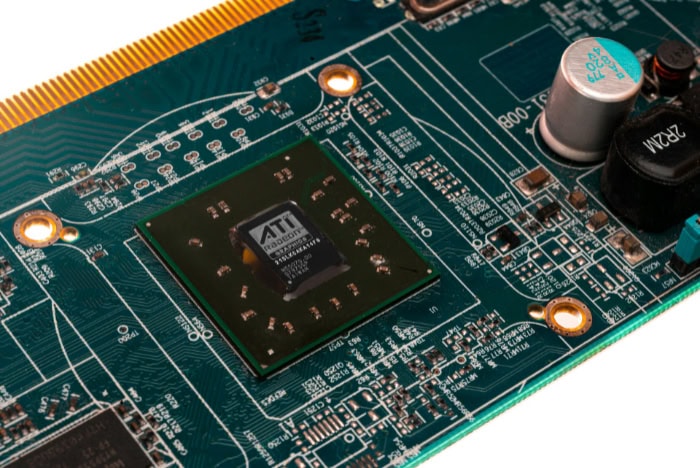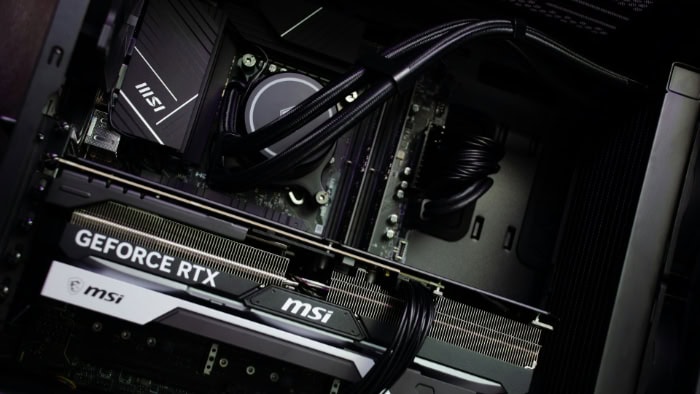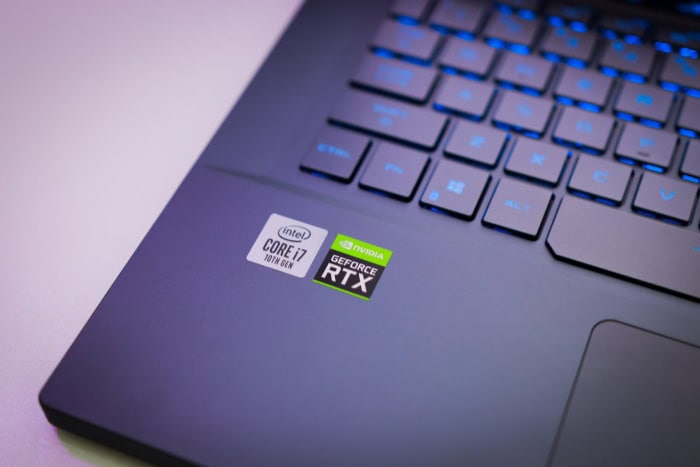Integrated vs. Dedicated Graphics Cards: Which to Choose?

Modern computing relies heavily on the power of graphics cards, whether you're casually browsing the web or pushing the limits in high-performance gaming and creative work. There are two primary types of GPUs available: integrated and dedicated.
Integrated graphics are built into the processor, offering a simpler and more energy-efficient solution, while dedicated graphics cards function as separate components, providing significantly more power for demanding tasks. Choosing between the two can have a major impact on performance, cost, and usability.
Performance Comparison
The performance of a graphics card is often the most critical factor when considering a new computer or upgrade. Integrated and dedicated GPUs offer different performance levels, depending on the type of tasks being performed.
While integrated graphics are designed to handle standard computing tasks efficiently, dedicated GPUs are built to tackle more demanding workloads.
Everyday Computing
For most users, everyday computing tasks like web browsing, word processing, and streaming videos are a major part of their routine. Integrated GPUs are typically more than sufficient for these activities.
Integrated graphics share resources with the CPU and system memory, which allows them to handle light graphical tasks with minimal power consumption. This makes them a great choice for users who need a balance between performance and efficiency.
In tasks like watching HD videos, streaming content, and using office applications, integrated graphics perform without any noticeable lag or slowdown.
Most modern integrated GPUs, such as Intel’s Iris Xe and AMD’s integrated Radeon graphics, are capable of delivering smooth performance for basic multimedia needs.
Unless your day-to-day activities involve more intensive graphical work, dedicated GPUs often provide more power than is necessary for these kinds of tasks.
Gaming
Gaming is one of the most demanding aspects of computing for any GPU.
The performance difference between integrated and dedicated graphics becomes quite apparent when playing modern games, especially those with complex visuals and high frame rate requirements.
Integrated GPUs are capable of running casual or older games, but they struggle with the latest AAA titles or graphically demanding games. For casual gaming or indie titles that don’t require high-end graphics, integrated GPUs can provide a satisfactory experience.
However, when it comes to games that demand higher frame rates, higher resolutions, and graphical settings, integrated GPUs often fall short.
For instance, in games like Fortnite or League of Legends, integrated GPUs can handle low to medium settings without much trouble, but the experience becomes less smooth at higher resolutions or more detailed graphics settings.
Dedicated GPUs, on the other hand, are built with gaming in mind. They come with their own video memory (VRAM) and processing power, ensuring they can handle heavy workloads without taxing the system’s main resources.
For high-end gaming, dedicated cards such as NVIDIA’s GeForce RTX series or AMD’s Radeon RX series provide significantly better frame rates and can support higher graphical settings.
These GPUs are designed for 1080p, 1440p, and even 4K gaming, delivering smooth performance even in the most visually demanding games.
Creative Workloads
When dealing with creative workloads like video editing, 3D rendering, or working with CAD software, the performance gap between integrated and dedicated GPUs widens even further.
Creative professionals often deal with large files, complex visual effects, and real-time rendering, all of which require substantial graphical power.
While integrated GPUs can manage basic photo editing or the occasional short video project, they are not designed for heavy-duty, professional use.
Tasks like rendering a 4K video or creating detailed 3D models can overwhelm integrated graphics, leading to longer processing times and potentially slowing down the entire system.
Integrated GPUs rely on the system’s RAM and CPU, which limits their ability to handle these large-scale tasks efficiently.
Dedicated GPUs, on the other hand, excel in creative environments. For professionals working with Adobe Premiere, Blender, AutoCAD, or other resource-intense software, a dedicated GPU is essential.
These GPUs come equipped with their own VRAM, which allows them to process large amounts of graphical data without impacting the system’s overall performance.
For example, NVIDIA’s Quadro series and AMD’s Radeon Pro cards are specifically designed for professional workloads, offering optimized drivers and higher precision for tasks like video editing, 3D modeling, and scientific computation.
This makes dedicated GPUs the clear choice for professionals looking to maximize productivity and ensure fast, reliable performance in creative tasks.
Cost Considerations

Cost is often a significant factor when choosing between integrated and dedicated graphics. The price of a computer can vary dramatically depending on the GPU, and understanding how each option impacts the overall cost can help users make more budget-conscious decisions.
Initial System Cost
One of the most noticeable differences between systems with integrated and dedicated graphics is the initial cost. Devices that come with integrated GPUs are generally more affordable, as the graphics processor is built into the CPU, eliminating the need for a separate graphics card.
This design keeps the overall production cost lower, making laptops or desktops with integrated graphics ideal for users on a budget or those who don't require high-end graphical performance.
For instance, laptops equipped with Intel’s integrated Iris Xe or AMD’s integrated Radeon graphics are often significantly cheaper than their counterparts with dedicated GPUs. A laptop with integrated graphics might cost a few hundred dollars less than a similar model with a dedicated GPU like an NVIDIA GeForce or AMD Radeon card.
This makes integrated GPUs an appealing choice for students, office workers, or casual users who primarily use their computers for tasks like writing documents, browsing the web, and streaming media.
In contrast, systems with dedicated GPUs tend to be more expensive because they include a separate, standalone graphics card. This additional hardware adds to the overall cost of the device.
Dedicated GPUs also require better cooling systems and power supplies, which further increases the price.
High-end gaming laptops or workstations with powerful GPUs can cost hundreds to thousands of dollars more than machines with integrated graphics, reflecting the premium for enhanced graphical performance.
Long-Term Value
While the initial cost of a system with integrated graphics is lower, it’s also important to consider long-term value. For users who only need basic performance, the lower price of integrated graphics often translates into greater savings over time.
If your computing needs are limited to light work tasks, web browsing, and occasional media consumption, an integrated GPU will likely serve you well for several years without needing to upgrade or replace your machine.
This makes integrated graphics a cost-effective solution for users with simple requirements.
On the other hand, for those who need high-end performance, such as gamers or creative professionals, a dedicated GPU offers better long-term value.
Although the initial investment is higher, dedicated GPUs provide the necessary power to handle demanding applications and future-proof your system for several years.
Users who need to work with advanced software, such as 3D rendering tools or video editing programs, will find that the extra expense of a dedicated GPU pays off in terms of increased productivity and performance.
In this case, the higher upfront cost is balanced by the longevity and capability of the machine, making it a worthwhile investment.
However, there is a trade-off: if your needs are modest and unlikely to increase over time, the additional cost of a dedicated GPU may not be justified.
For users who don’t require the high-end performance that comes with gaming or creative workloads, integrated graphics can offer better value by eliminating unnecessary expenses.
Upgrade Costs
Upgrade potential is another key consideration when evaluating the cost difference between integrated and dedicated GPUs. In desktops, dedicated GPUs can often be upgraded relatively easily.
This means that users can start with a mid-range GPU and, in the future, swap it out for a more powerful card as their needs evolve or as better technology becomes available.
While this upgrade comes at an additional cost, it allows users to extend the useful life of their system without replacing the entire machine.
In contrast, integrated GPUs are built into the CPU and cannot be upgraded separately. This limits the flexibility of systems relying on integrated graphics.
If users with integrated GPUs find that their graphical performance is no longer sufficient—perhaps due to new gaming requirements, software demands, or changes in workload—they will need to replace the entire system (motherboard and CPU included) to gain better performance.
This lack of upgradeability means that systems with integrated graphics may need to be replaced more frequently in situations where performance needs increase over time.
In laptops, the situation is even more rigid. Most laptops, whether equipped with integrated or dedicated GPUs, do not allow for simple GPU upgrades.
However, laptops with dedicated GPUs usually have better long-term performance, which can delay the need to replace the entire machine. On the other hand, laptops with integrated graphics may become obsolete sooner, leaving users with no choice but to buy a new device sooner than anticipated.
Power Consumption and Portability

The type of GPU in a computing device can have a significant impact on power consumption, battery life, and overall portability. Integrated and dedicated GPUs differ greatly in how they manage power and heat, which in turn influences device size, battery efficiency, and portability.
Battery Life
Battery life is one of the most critical considerations for laptop users, especially those who rely on their devices for extended periods without access to a power source.
Integrated GPUs are known for their lower power consumption, which directly translates into extended battery life.
Since integrated graphics are built into the CPU, they share resources and operate more efficiently, consuming less energy during light computing tasks such as web browsing, word processing, or streaming media.
This makes laptops with integrated GPUs ideal for users who prioritize battery life—students, professionals, or anyone who frequently works on the go.
On the other hand, dedicated GPUs consume significantly more power due to their higher performance capabilities. These standalone graphics cards are designed to handle heavy graphical workloads, such as gaming, video editing, or 3D rendering, which requires more energy.
As a result, laptops with dedicated GPUs tend to have shorter battery life, especially when performing tasks that heavily rely on the GPU.
Even with advanced power-saving features, dedicated GPUs will drain a battery faster than integrated ones, which can be a disadvantage for users who need long-lasting battery performance.
Gamers and creative professionals who use laptops with dedicated GPUs often find themselves needing to stay plugged in for most of the time to sustain peak performance.
Heat Generation
Along with increased power consumption, dedicated GPUs also generate more heat than their integrated counterparts. This is because dedicated graphics cards have more powerful components, such as separate memory and processing units, which need to be cooled effectively to maintain performance.
High-end dedicated GPUs can produce considerable heat, especially during intensive tasks like gaming or rendering.
As a result, laptops or desktops equipped with dedicated GPUs require more advanced cooling systems, which often include additional fans or heat pipes.
These cooling solutions not only add to the overall size and weight of the device but can also make it noisier when under heavy load.
In contrast, integrated GPUs produce far less heat. Since they are designed for lightweight tasks and are built directly into the CPU, they require less power and generate less heat.
This allows laptops with integrated GPUs to have simpler cooling systems, which can reduce both the size and noise levels of the device.
The lower heat output also means that users are less likely to experience thermal throttling, a process in which the system slows down to prevent overheating, during prolonged periods of use.
This makes integrated GPUs a more attractive option for users who prioritize quiet, cool-running machines, particularly in smaller or more portable devices.
Portability Considerations
Portability is a major factor for many users when selecting a laptop, particularly for those who travel frequently or need a lightweight device for daily use.
Integrated GPUs are commonly found in thin-and-light laptops because they take up less space, use less power, and generate less heat.
This allows manufacturers to design ultra-slim, lightweight devices without compromising battery life or thermal management. These laptops are often favored by professionals, students, or casual users who value portability and don’t need high-end graphics performance.
Devices like Apple’s MacBook Air or lightweight ultrabooks from other brands often feature integrated GPUs, providing a balance between portability and adequate performance for general tasks.
In contrast, laptops with dedicated GPUs are typically bulkier and heavier due to the additional components and cooling systems required to support the GPU’s performance.
High-performance gaming laptops, for example, are often larger and come with more powerful cooling solutions to prevent overheating during extended gaming sessions.
While these laptops offer superior performance in graphically demanding tasks, they are less convenient to carry around.
Users who prioritize performance over portability, such as gamers or creative professionals working with resource-heavy applications, may find these trade-offs acceptable, but it’s important to be aware that dedicated GPUs typically come at the cost of increased size and weight.
Memory Usage and System Resources

The way a GPU uses memory and system resources plays an important role in overall system performance. Integrated and dedicated GPUs differ significantly in how they handle memory, which affects everything from the smoothness of running multiple applications to the ability to process complex graphical tasks.
Shared Memory (Integrated)
Integrated GPUs rely on shared memory, meaning they use the system’s main RAM (Random Access Memory) to handle graphical tasks. Since integrated GPUs are built into the CPU, they don’t have their own dedicated video memory (VRAM).
Instead, they borrow a portion of the system’s RAM to process graphics. This shared memory architecture is more cost-effective and energy-efficient but comes with some limitations.
One of the main drawbacks of shared memory is the potential impact on system performance, particularly when running memory-intensive applications.
For example, if a system with integrated graphics is performing a task like editing a large document, streaming a video, and running a game simultaneously, both the CPU and GPU are competing for the same pool of RAM.
This can slow down the overall system, especially if the machine has limited RAM capacity to begin with. The more memory the integrated GPU uses, the less there is available for other applications, which can cause noticeable lag, slower load times, or even system freezes during heavy multitasking.
In everyday tasks like web browsing or using office applications, integrated GPUs are typically sufficient, as these activities don’t demand much memory.
However, when running more complex programs like video editing software or modern games, the limitations of shared memory may become apparent.
Users with integrated GPUs should ensure their systems have enough RAM to handle both general computing tasks and the GPU’s memory needs, especially when multitasking.
Dedicated VRAM (Dedicated)
Dedicated GPUs come with their own video memory, known as VRAM (Video RAM), which is specifically designed to handle graphical data.
Unlike integrated GPUs, which share system RAM with the CPU, dedicated GPUs have a separate pool of memory that is only used for processing graphics.
This allows the GPU to handle large amounts of graphical data more efficiently without impacting the system’s overall memory resources.
The amount of VRAM equipped in a dedicated GPU varies depending on the model, with high-end cards offering 8GB, 12GB, or even more. VRAM is crucial for tasks that involve large graphical assets, such as gaming at high resolutions, 3D rendering, or working with high-definition video files.
For example, when playing a modern AAA game at 4K resolution, the GPU needs to load and process a significant amount of textures, shaders, and other graphical elements.
Having sufficient VRAM ensures that these assets can be loaded quickly, resulting in smoother performance, higher frame rates, and less stuttering.
In creative workloads, VRAM is equally important. Applications like Adobe Premiere, Blender, or AutoCAD rely heavily on the GPU’s memory to handle large files and complex visual effects.
Insufficient VRAM can cause slowdowns or force the system to offload data onto slower system RAM or even the hard drive, which negatively impacts performance.
For users who work on professional video projects, 3D modeling, or other graphically demanding tasks, a dedicated GPU with ample VRAM is essential to ensure optimal performance and smooth workflow.
Suitability for Different Users

Choosing between integrated and dedicated GPUs largely depends on the user’s specific needs. While integrated graphics are more than adequate for everyday tasks, dedicated GPUs are often necessary for more demanding activities like gaming or professional creative work.
Casual Users
For casual users, integrated graphics are typically more than enough. Most people use their computers for basic tasks like browsing the web, watching videos, using office software, and light photo editing.
Integrated GPUs are designed to handle these activities efficiently while keeping the system power consumption low and maintaining a lower overall cost.
Modern integrated graphics, especially from Intel and AMD, are more powerful than ever, providing smooth and responsive performance for general computing without needing a dedicated graphics card.
If your daily computing tasks don’t involve heavy graphical work, there’s little reason to invest in a more expensive system with a dedicated GPU.
Integrated graphics not only meet the needs of most casual users but also make laptops more portable by reducing power consumption and heat output.
This makes them ideal for students, office workers, or anyone who primarily uses their computer for simple tasks and prefers a balance between performance, cost, and battery life.
Gamers
Gamers are one of the groups most affected by the choice between integrated and dedicated GPUs. The type of games you play should determine which GPU setup is best for you.
Integrated GPUs can handle basic or older games, particularly those with lower system requirements, such as indie titles, strategy games, or older classics. Modern integrated chips, like Intel’s Iris Xe or AMD’s Vega integrated graphics, can manage some light gaming at lower resolutions and medium settings, but they will struggle with more graphically demanding titles.
For serious gamers, particularly those interested in playing AAA games or competitive multiplayer titles, a dedicated GPU is essential. Games like Cyberpunk 2077, Call of Duty, or Red Dead Redemption 2 require far more graphical power than integrated GPUs can provide.
Dedicated GPUs, such as NVIDIA’s GeForce RTX or AMD’s Radeon RX series, are designed to handle the demands of high frame rates, high-resolution textures, and complex lighting effects.
These GPUs provide the performance necessary to play modern games at 1080p or higher resolutions with smooth frame rates and high graphical settings.
In addition to delivering better performance, dedicated GPUs also enable gamers to take advantage of advanced features like ray tracing, which enhances the realism of lighting and reflections in games, and DLSS (Deep Learning Super Sampling), which improves performance without sacrificing visual quality.
Gamers who want the best possible experience, especially in terms of visuals and performance, will undoubtedly benefit from investing in a system with a dedicated GPU.
Content Creators/Professionals
For content creators and professionals working in fields that require intensive graphical processing, a dedicated GPU is often a necessity.
Tasks such as video editing, 3D rendering, graphic design, and animation place significant demands on the GPU, and integrated graphics are rarely powerful enough to handle these workloads efficiently.
While an integrated GPU can manage basic image editing or light video work, it will struggle with large files, high-definition video projects, or complex 3D models.
Dedicated GPUs come with their own VRAM, allowing them to process large graphical datasets without overwhelming the system’s main resources.
This is especially important for professionals working with software like Adobe Premiere Pro, Blender, AutoCAD, or DaVinci Resolve, where the GPU is responsible for rendering effects, processing video in real-time, or handling complex animations.
The additional processing power of a dedicated GPU not only speeds up these tasks but also ensures smoother performance during editing, reducing lag and improving workflow efficiency.
Many professionals also benefit from GPU acceleration, which is a feature in many creative software tools that offloads certain tasks, such as rendering or encoding, to the GPU rather than the CPU.
This significantly reduces the time it takes to complete these tasks, which can be a critical factor in meeting tight deadlines or improving productivity in a professional setting.
For users who rely on their computer for creative work, a dedicated GPU is an investment in performance and efficiency that can ultimately save time and improve the quality of their output.
Conclusion
Graphics cards play a vital role in shaping your computing experience, but the choice between integrated and dedicated GPUs depends heavily on your specific needs.
Integrated GPUs offer a cost-effective, energy-efficient solution for everyday tasks and casual computing, making them ideal for users who prioritize battery life, portability, and budget.
Casual gamers and those with basic computing needs will find integrated graphics sufficient for lighter workloads and older games, but high-end gaming and professional creative work demand the power and performance of a dedicated GPU.
Dedicated GPUs provide the graphical muscle required for demanding applications like AAA gaming, video editing, and 3D rendering, ensuring fast processing, better multitasking, and smoother performance.
However, they come with higher costs, greater power consumption, and typically less portability.


